Art & Exhibitions
7 Fun Facts to Celebrate Willem de Kooning’s Birthday
When did MoMA first acquire a work by the artist?
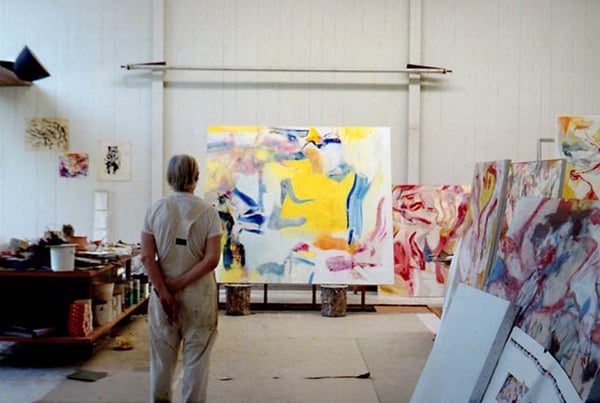
When did MoMA first acquire a work by the artist?

Artnet News

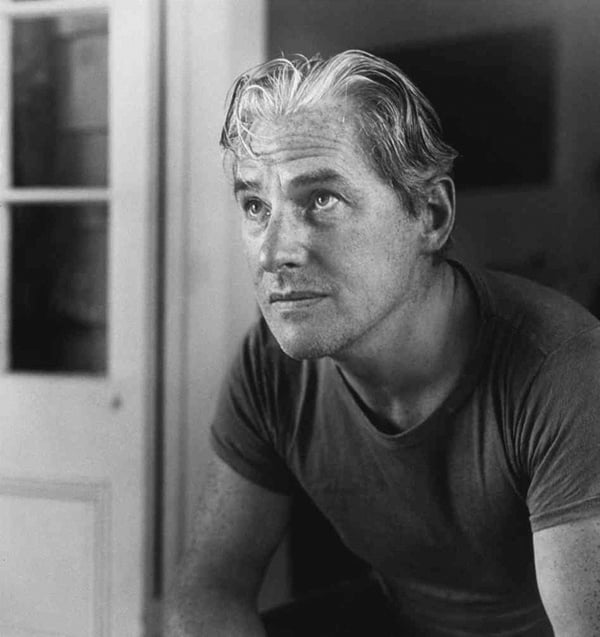
Willem de Kooning.
Photo: courtesy of Blendspace.
Lauded for being an early pioneer of Abstract Expressionism and “action painting,” Dutch American painter Willem de Kooning, were he alive, would have turned 111-years-old today.
In celebration of his birthday, we’ve gathered some fun facts about the artist.
1. De Kooning dropped out of school when he was just 12 years old to start an apprenticeship in commercial design and decorating. During his apprenticeship, he took classes at the Rotterdam Academy of Fine Arts and Techniques. At 16, he landed a job with an art director of a large department store.

Willem de Kooning in his studio.
Photo: © 2012 Tom Ferrara. Artwork © 2012 The Willem de Kooning Foundation/Artists Rights Society (ARS), New York
2. In 1926, De Kooning stowed away on a ship bound for the United States. When he arrived in the country, he jumped between several jobs in commercial design but eventually settled in New York City where he would continue to build his career as an artist.

1936 WPA Poster for Federal Theatre Project presentation.
Photo: via Wikipedia.
3. In 1935, De Kooning began a job for the federal art project for the Works Progress Administration, through which he created murals and other works of art. (See A Treasure Hunt for Lost WPA Masterpieces.) However, since he was not an American citizen, he was forced to resign two years later.

Willem de Kooning, Seated Figure (Male Classical) (1939).
Photo: via Wikipedia.
4. The artist was first featured at the Museum of Modern Art in the 1936 exhibition “New Horizons in American Art.” It was a decade after he came to the United States. In 2011, MoMA staged “De Kooning: A Retrospective,” the first major museum survey dedicated to the full range of De Kooning’s career. (See Beauty and the Beastly Artist: Willem de Kooning’s Destructiveness.)
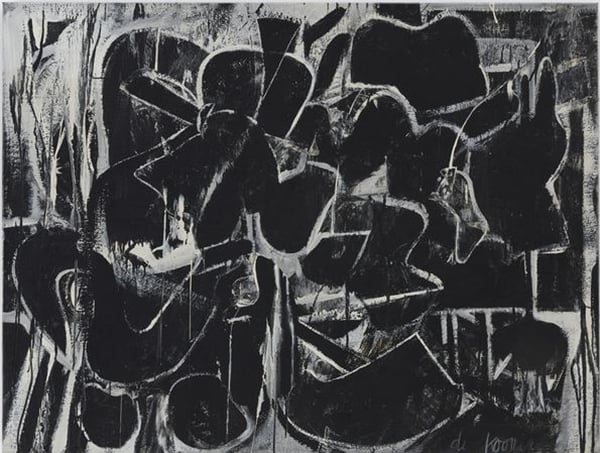
Willem de Kooning, Painting (1948).
Photo: Courtesy of The Museum of Modern Art 2011 The Willem de Kooning Foundation / Artists Rights Society (ARS), New York.
5. In 1948, De Kooning had his first solo show at the Charles Egan Gallery. (See Legendary Women Art Dealers You Need to Know, Part III.) Six months later, MoMA acquired its first work by the artist. During this period of De Kooning’s life, he also began teaching at Black Mountain College in North Carolina and at the Yale School of Art.
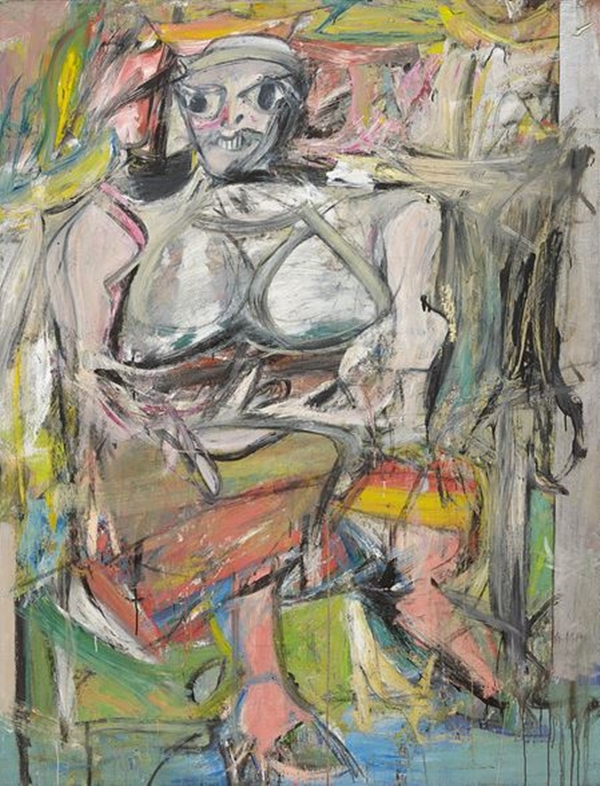
Willem de Kooning, Woman, I (1950–52).
Photo: Courtesy of The Museum of Modern Art, New York. 2011 The Willem de Kooning Foundation / Artists Rights Society (ARS), New York.
6. De Kooning hired Elaine Fried as his apprentice to sit for him. They married in 1943 and would remain married for over 45 years. Their relationship was fraught and they were separated for over a decade during that time, but the pair later reunited and remained together until Elaine’s death in 1989. (See Artist Says National Portrait Gallery Trivializes Elaine de Kooning.)
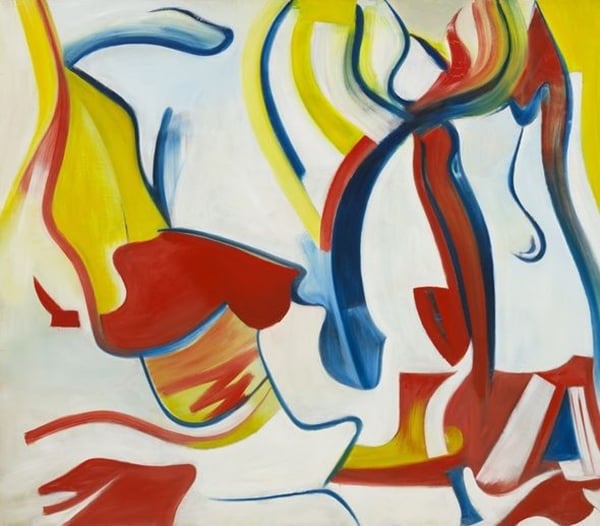
Willem de Kooning, Rider (Untitled VII) (1958).
Photo: Courtesy of The Museum of Modern Art, New York, 2011 The Willem de Kooning Foundation/Artists Rights Society (ARS), New York
7. The artist had an on-again-off-again relationship with figurative painting. In 1953, with his show at the Sidney Janis Gallery “Paintings on the Theme of the Woman,” he became a driving force in a new figurative Expressionism. He abandoned it in 1956 in favor of abstraction but later returned to it in the early 1960s with the second generation of his “Woman” series.
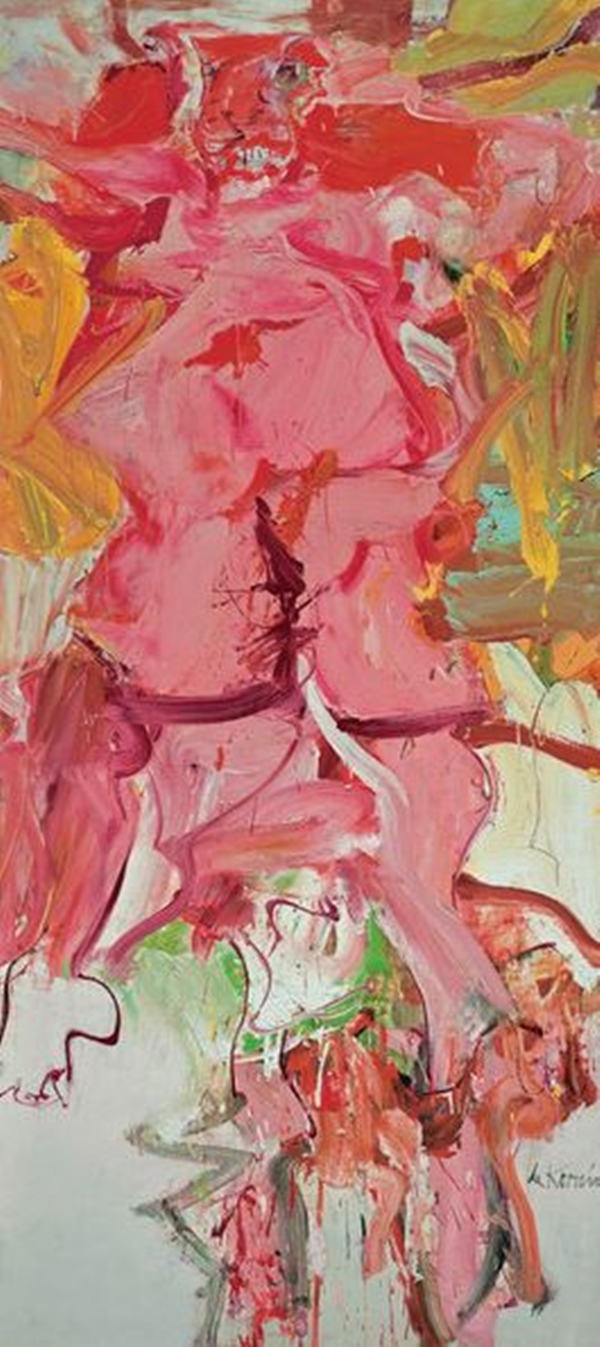
Willem de Kooning, Woman, Sag Harbor (1964).
Photo: Courtesy of Hirshhorn Museum and Sculpture Garden, Smithsonian Institution, Washington, DC.,
2011 The Willem de Kooning Foundation / Artists Rights Society (ARS), New York.